Taming the Asparagus Jungle: A Hillside Garden Rescue Mission
Some days you show up to a landscaping job thinking you know what you're getting into, and then nature surprises you with something completely different. Yesterday was one of those days when I arrived at a beautiful hillside property to tackle what the client described as "an overgrown asparagus garden that needs some attention."
What I found was nothing short of a botanical jungle – a wild tangle of towering asparagus stalks, invasive weeds, and competing vegetation that had turned what was once probably a neat garden bed into something resembling a miniature rainforest.
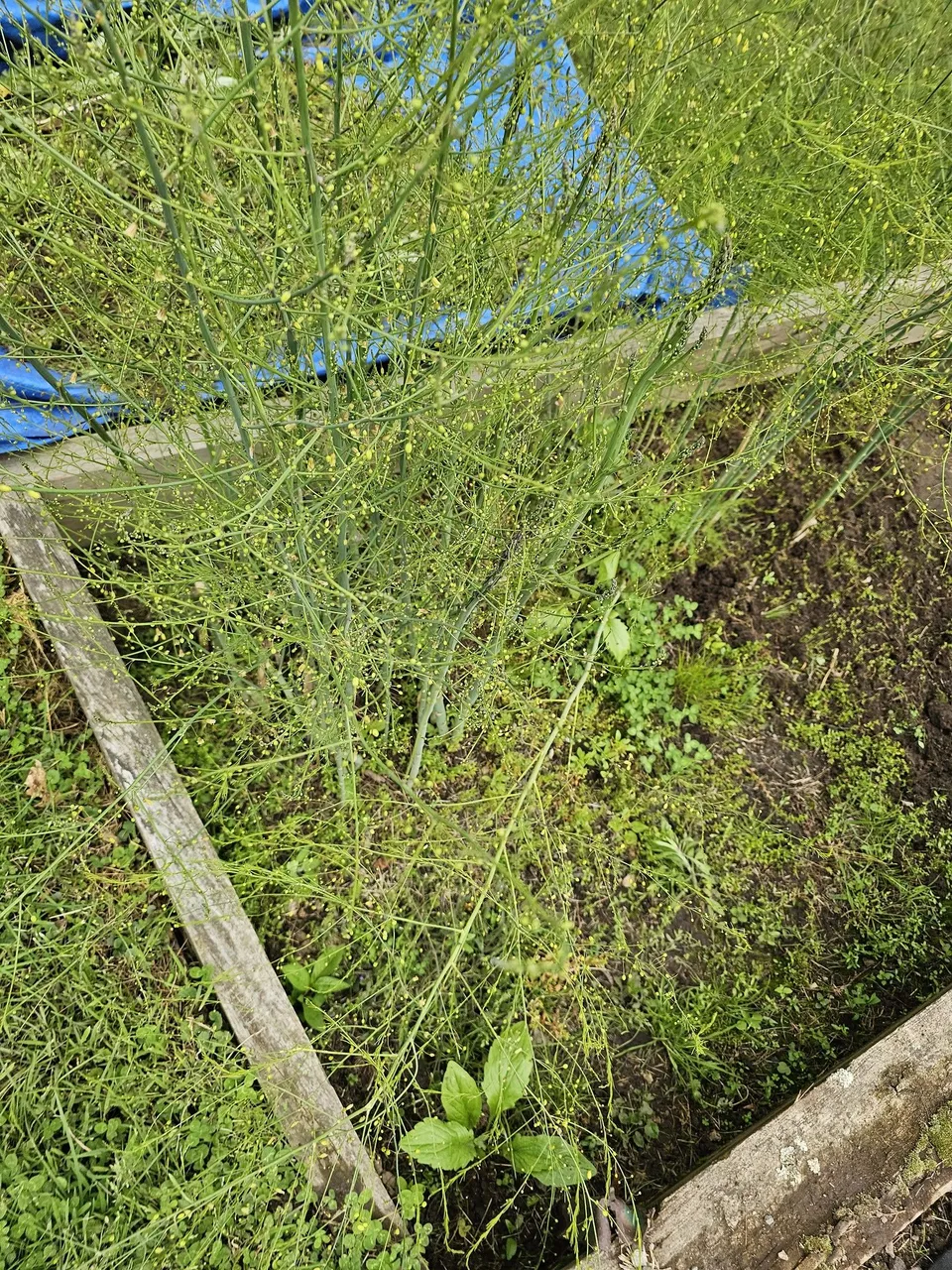
The Challenge: Nature Reclaims the Garden
Standing at the edge of this hillside plot, I had to take a moment to assess what I was dealing with. The asparagus plants, left to their own devices for what must have been several seasons, had grown into towering green giants. Some of the stalks reached well above my waist, creating a dense canopy of feathery foliage that filtered the sunlight down to the forest floor below.
But the asparagus wasn't the only player in this overgrown drama. Weeds of every description had moved in to claim their territory. There were medium-sized shrubs that had no business being in a vegetable garden, smaller invasive plants weaving through everything, and ground-covering weeds that had created a thick mat across the soil surface.
The whole area looked like it belonged in a nature documentary rather than someone's backyard garden. It was beautiful in its own wild way, but completely non-functional as a food-producing space.
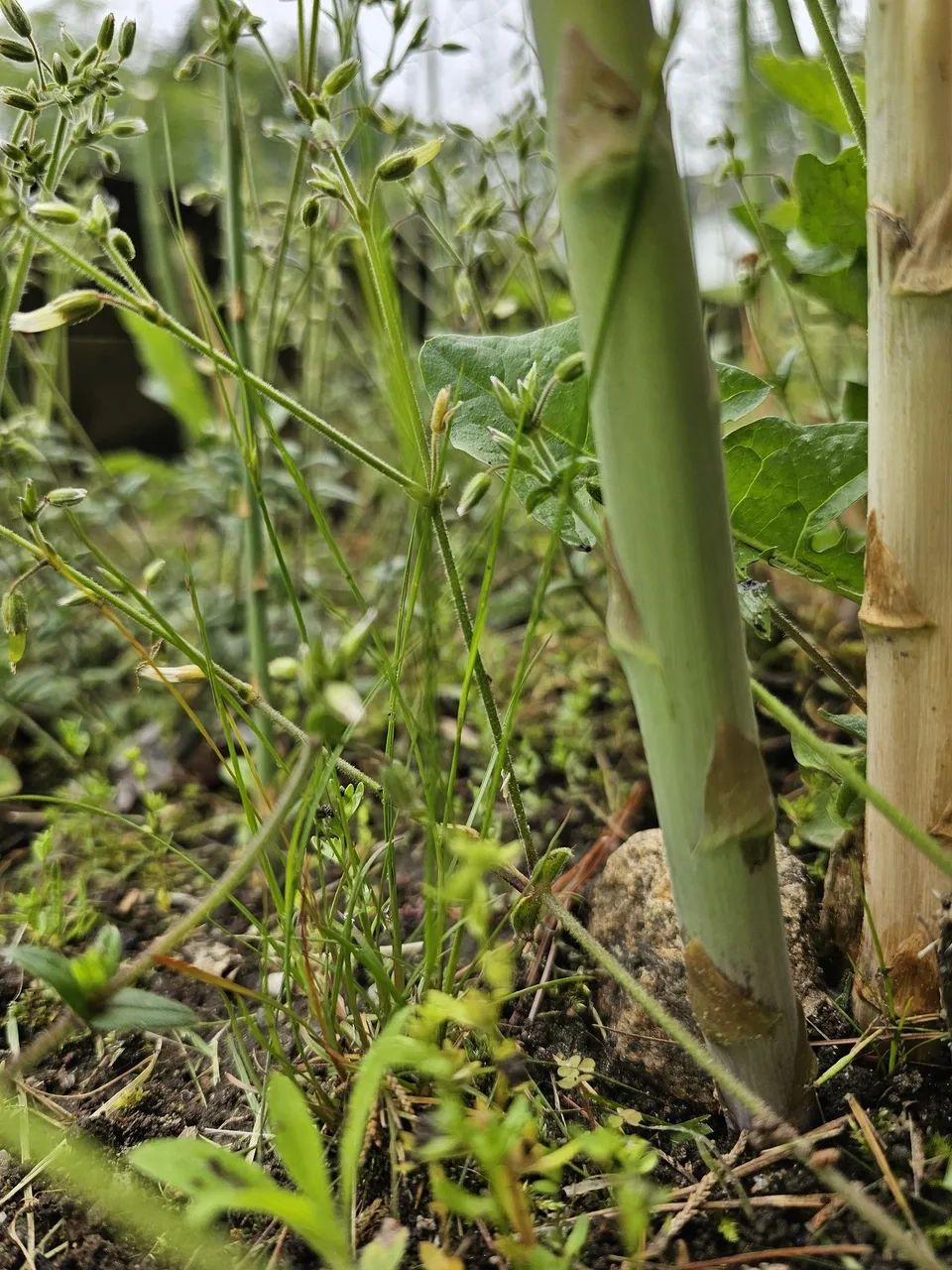
Getting Down to Ground Level
Before diving into the work, I wanted to document what I was seeing. There's something fascinating about these completely overgrown spaces – they tell stories about time, neglect, and nature's incredible ability to reclaim any space we're not actively managing.
I grabbed my camera and started exploring the jungle from different angles. The view from above showed the general chaos, but when I got down to ground level, crouching among the asparagus stalks, an entirely different world revealed itself.
From down there, looking up through the towering green stems, it felt like being in a bamboo forest. The asparagus stalks rose like pillars all around me, their feathery tops creating a canopy overhead. The filtered light created an almost mystical atmosphere, and I could understand how this space had become so appealing to all the other plants that had moved in uninvited.
At ground level, the complexity of this botanical tangle became even more apparent. Every square foot contained multiple layers of vegetation – the towering asparagus, mid-level weeds and shrubs, and ground-covering plants all competing for space and resources.
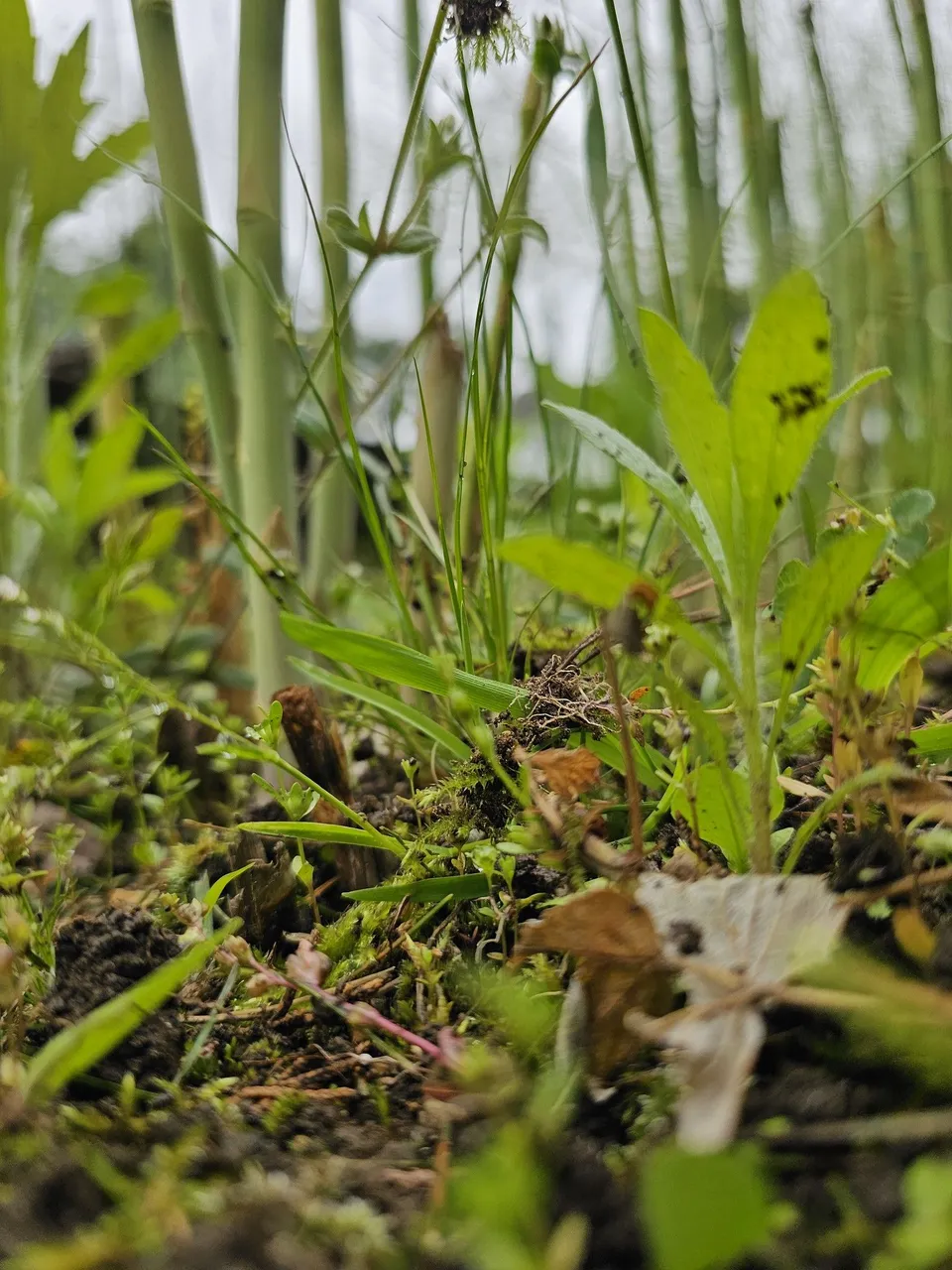
The Work Begins
Tackling this kind of overgrowth requires strategy. You can't just start pulling randomly or you'll end up doing more damage than good. I started by identifying what needed to stay (the asparagus) and what needed to go (pretty much everything else).
The asparagus plants themselves were actually quite healthy underneath all the competition. Years of neglect had allowed them to grow tall and wild, but the root systems were still strong and productive. The problem was that they were being choked out by aggressive weeds that were stealing nutrients, water, and sunlight.
I began by carefully removing the larger invasive shrubs, working my way through the tangle to avoid damaging the asparagus crowns below. Some of these weeds had developed surprisingly extensive root systems, requiring careful digging to remove them completely.
The medium-sized shrubs came next, followed by the smaller weeds and ground cover. Each layer I removed revealed more of the original garden structure underneath, like an archaeological dig in reverse.
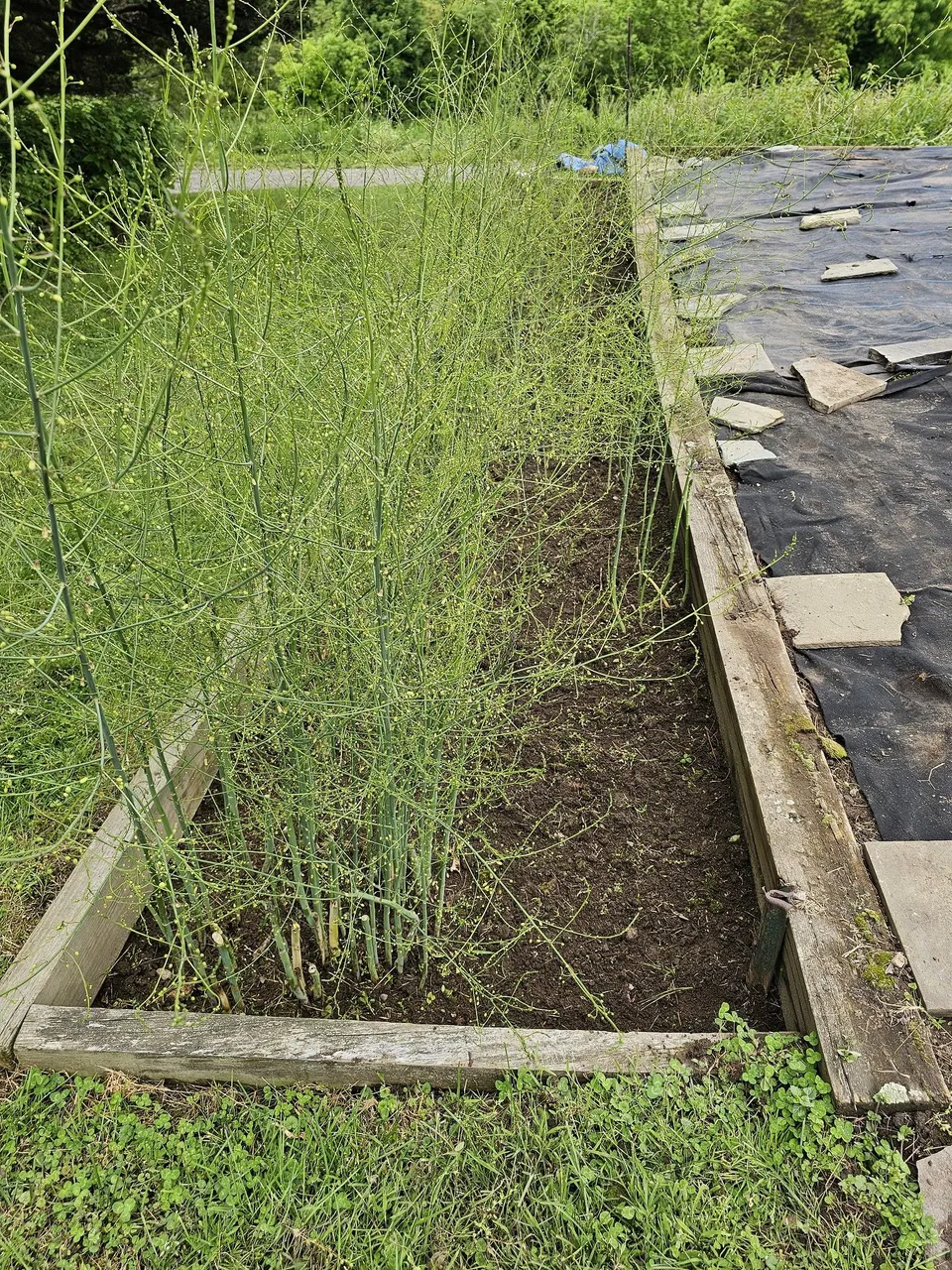
The Transformation
The difference between the before and after photos tells the whole story. What had been an impenetrable jungle of competing vegetation gradually revealed itself to be a well-established asparagus patch with excellent potential.
Once cleared, I could see the neat rows where asparagus crowns had been originally planted. The soil, though covered with years of organic debris, was rich and dark underneath. New asparagus spears were already beginning to emerge now that they weren't competing with all that other vegetation for resources.
The transformation was dramatic – from chaos to order, from jungle to productive garden space. But the work also revealed just how resilient and productive these asparagus plants could be with a little care and attention.
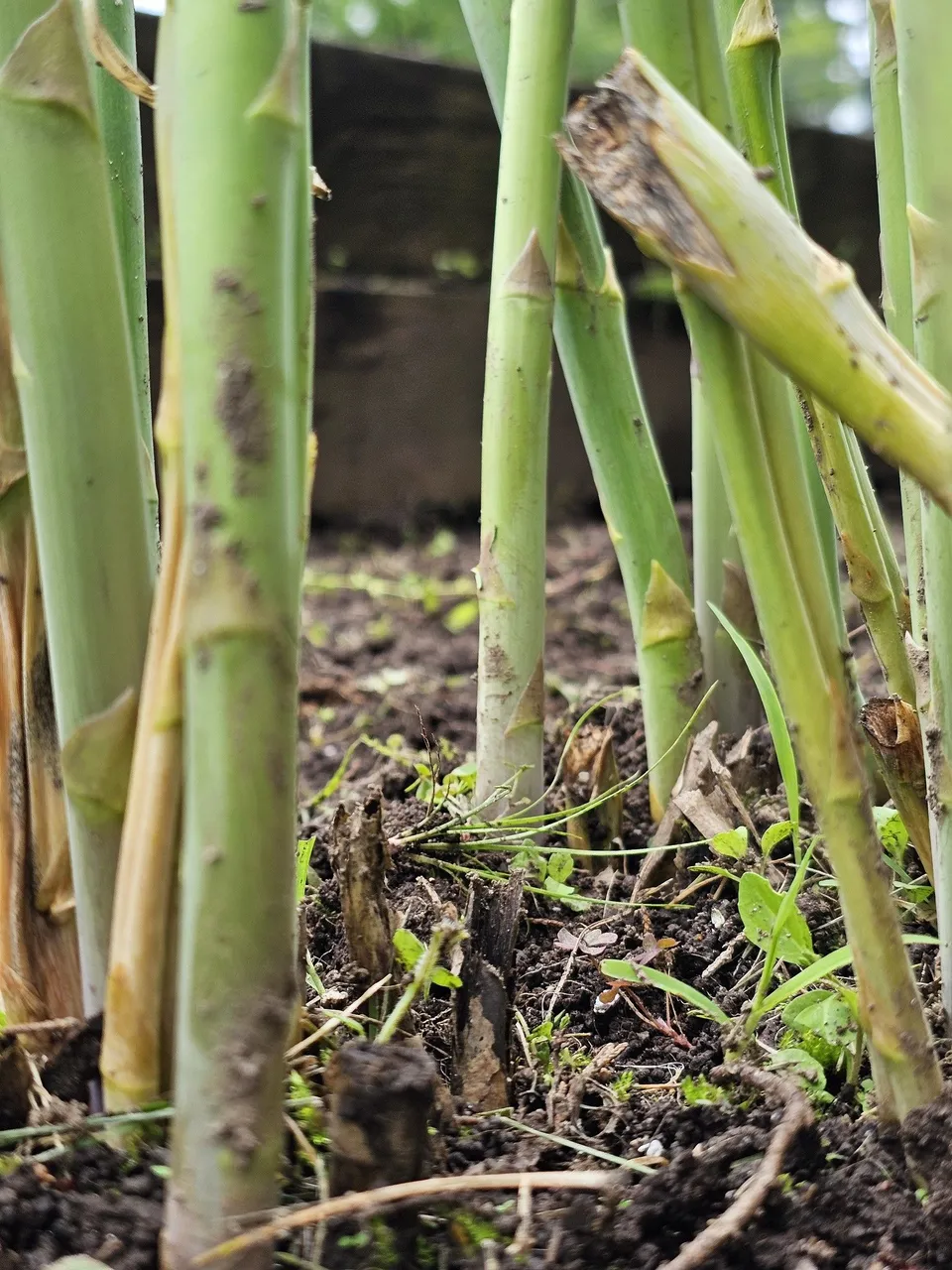
The Asparagus Advantage
Working in this reclaimed asparagus patch reminded me why this vegetable is such a favorite among gardeners. Asparagus is incredibly hardy and long-lived once established. These plants were probably decades old, and despite years of neglect, they were ready to bounce back and start producing again.
Asparagus is also one of the most nutritious vegetables you can grow. High in vitamins A, C, and K, plus folate and fiber, fresh asparagus from your own garden tastes completely different from what you get at the grocery store. The spears are sweetest when harvested and eaten the same day, something that's impossible with store-bought asparagus that may have traveled hundreds of miles.
From a landscaping perspective, asparagus plants also offer year-round interest. In spring, you get the edible spears. In summer, the tall, feathery foliage creates an attractive backdrop for other plants. In fall, the foliage turns golden yellow before dying back for winter.
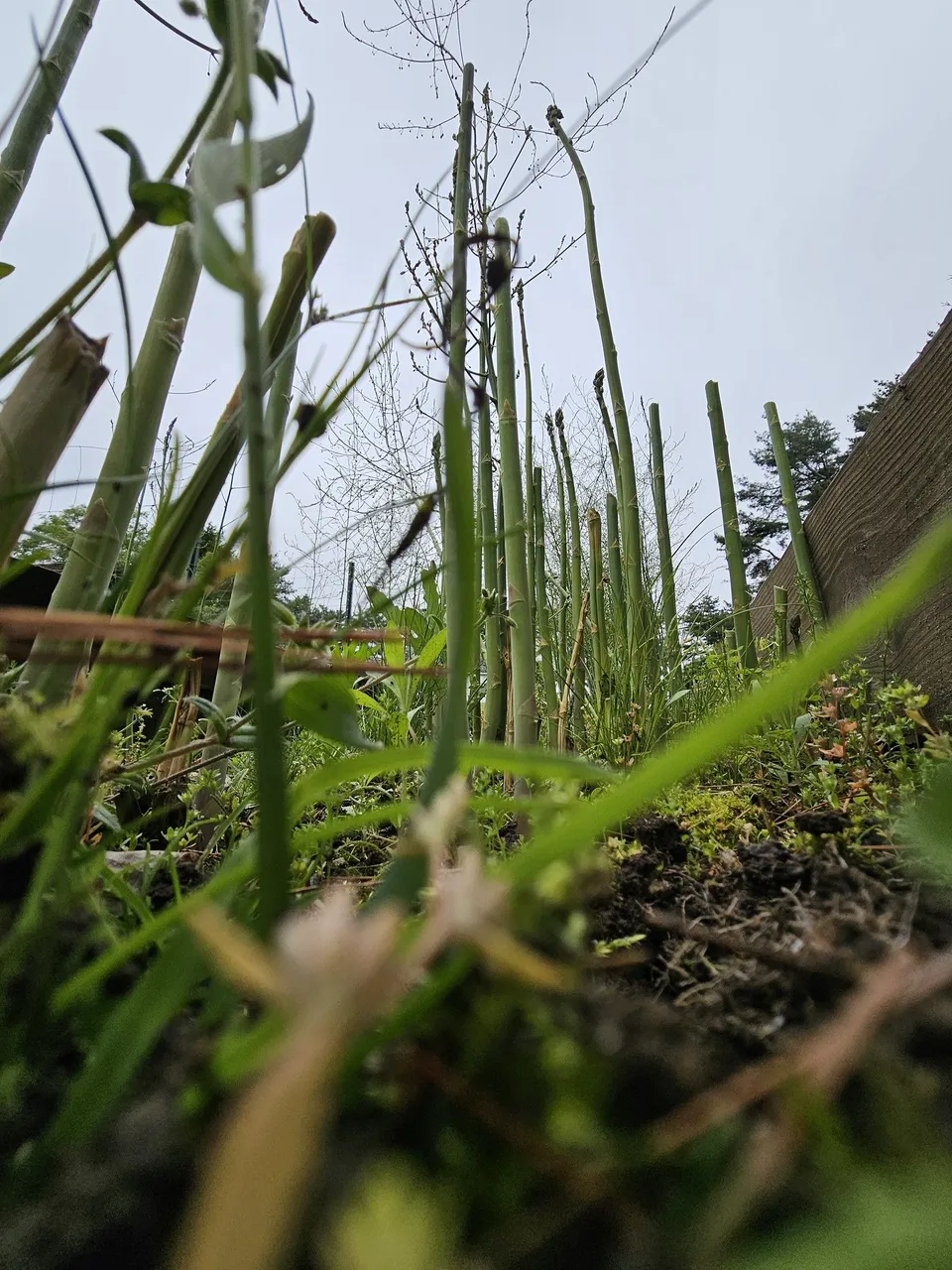
Lessons from the Jungle
This project reinforced several important lessons about garden maintenance and the relationship between cultivation and neglect. Gardens aren't static spaces – they're dynamic ecosystems that are constantly changing. Without regular intervention, even the most carefully planned garden will eventually return to a more natural state.
But there's also something valuable about seeing how nature fills in the spaces we leave unattended. The weeds and volunteer plants that had colonized this asparagus patch weren't inherently bad – they were just in the wrong place. In a wild setting, this kind of diverse plant community would be considered healthy and desirable.
The key is finding the balance between human intention and natural processes. This asparagus garden needed human intervention to fulfill its intended purpose as a food-producing space, but it had also benefited from some of the natural processes that had been occurring during its years of neglect.
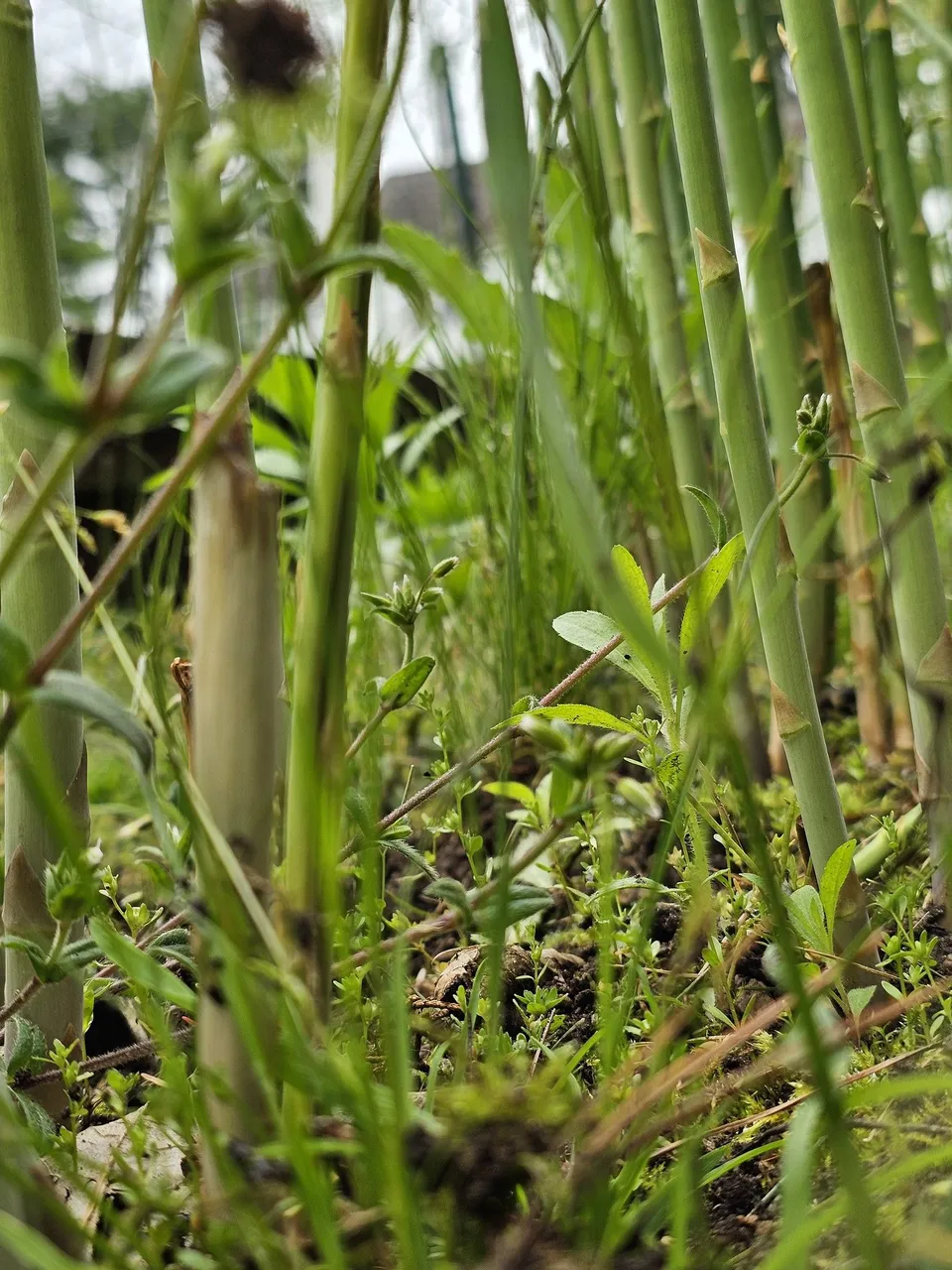
The Ongoing Process
Clearing this overgrown asparagus patch was just the beginning of bringing it back to productivity. Over the next few weeks, I'll be working with the property owner to establish a maintenance routine that will keep the weeds under control while allowing the asparagus to thrive.
This might include mulching around the plants to suppress weed growth, setting up an irrigation system to ensure consistent moisture, and developing a harvest schedule that will encourage maximum production without exhausting the plants.
The goal is to create a sustainable system that produces abundant asparagus without requiring the kind of major intervention that was necessary to reclaim the space from its jungle state.
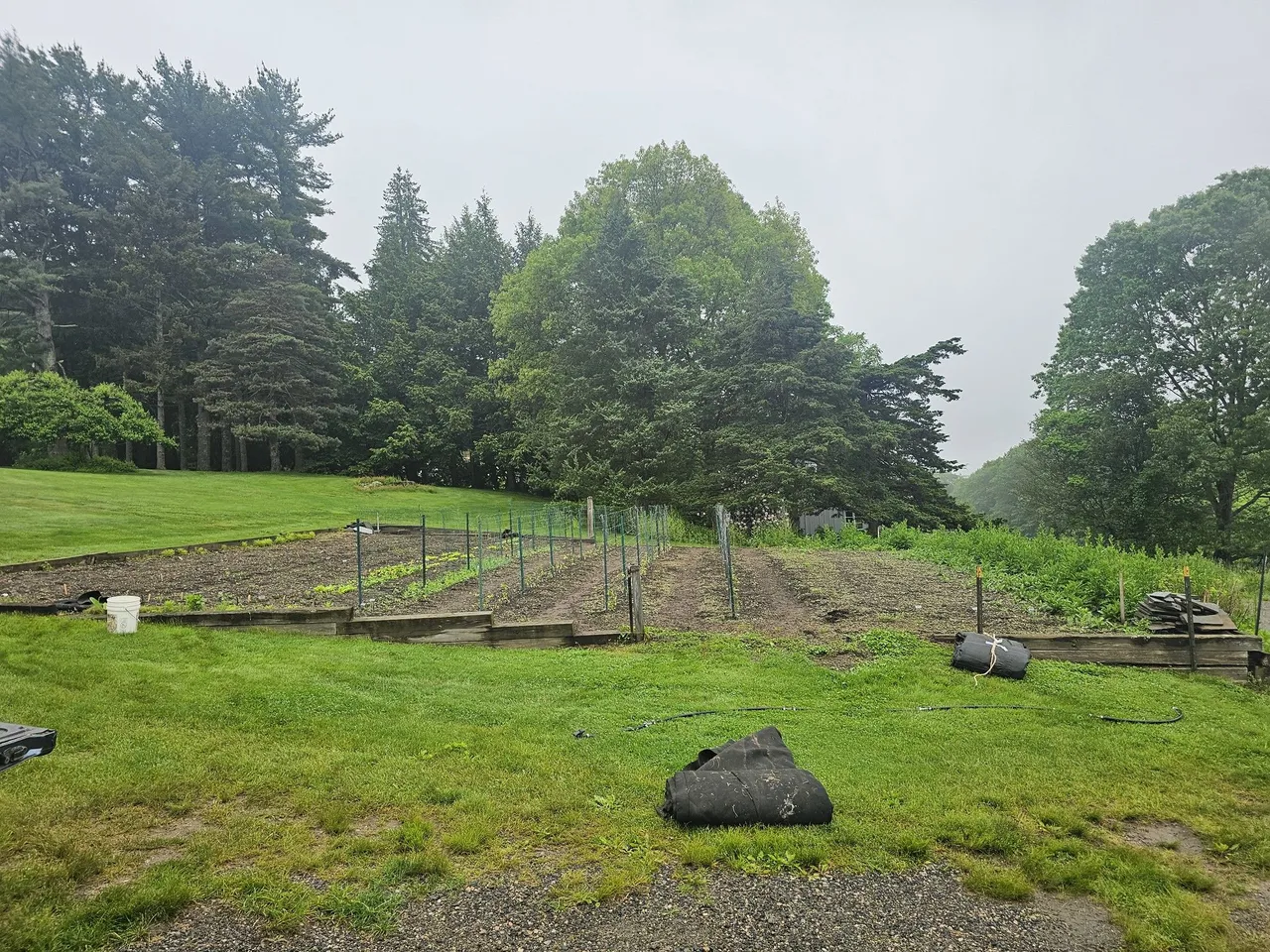
Final Thoughts
There's something deeply satisfying about rescuing a productive space from overgrowth and neglect. This asparagus patch had been waiting patiently under all that tangle of weeds, ready to resume its role as a source of fresh, healthy food for the property owners.
The project also reminded me of the importance of regular maintenance in garden spaces. A little attention throughout the growing season prevents the kind of major overhaul that becomes necessary when spaces are left completely unmanaged.
But perhaps most importantly, spending time in that asparagus jungle – both before and after the cleanup – reinforced my appreciation for the complexity and resilience of plant communities. Whether we're talking about carefully cultivated gardens or wild spaces, there's always more happening than meets the eye at first glance.
As I packed up my tools and looked back at the newly cleared asparagus patch, I felt good knowing that this space would soon be producing fresh, nutritious food again. And I made a mental note to appreciate the wild complexity of overgrown spaces before transforming them back into more orderly, productive gardens.